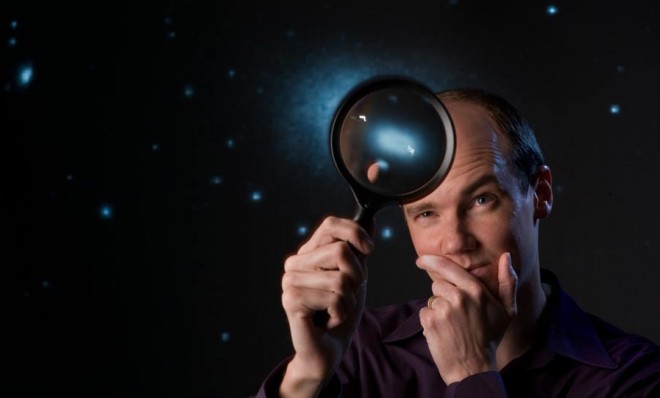What this tiny galaxy can tell us about the universe
Say hi to Segue 2 — the smallest galaxy yet discovered

Galaxies come in all sorts of shapes and sizes. Sometimes, they're egg-shaped behemoths capable of crashing into one another like a slow-motion car wreck. Other times, they spin with unfathomable power, whipping their enormous arms through space like a pinwheel.
Recently, a few Earthlings armed with physics degrees spotted an odd collection of stars loosely packed together in the night sky that had all the characteristics of a galaxy, including a dark matter halo.
But it was incredibly tiny. With about 1,000 stars total, it was just a small fraction of the Milky Way, which boasts 100 billion stars.
The Week
Escape your echo chamber. Get the facts behind the news, plus analysis from multiple perspectives.

Sign up for The Week's Free Newsletters
From our morning news briefing to a weekly Good News Newsletter, get the best of The Week delivered directly to your inbox.
From our morning news briefing to a weekly Good News Newsletter, get the best of The Week delivered directly to your inbox.
This itty-bitty galaxy was dubbed Segue 2, and is described in the latest issue of the Astrophysical Journal. Researchers think the miniature galaxy may hold "the key to a long-standing mystery about the evolution of the universe," reports the Los Angeles Times:
Astronomers have come to realize that size isn't the key difference between a star cluster and a tiny galaxy. Unlike a star cluster, all galaxies great and small are filled with and surrounded by a halo of dark matter — the invisible, mysterious stuff that fills the universe and acts as a sort of glue within and between galaxies. Thin tendrils of dark matter connect nodes of galaxy clusters, creating a cosmic web that has given the universe its structure. [LA Times]
According to study coauthor James Bullock, an astronomer at UC Irvine, "finding a galaxy as tiny as Segue 2" is akin to "discovering an elephant smaller than a mouse."
Bullock and his team aren't sure whether Segue 2 is what remains of a larger galaxy that's been ripped apart by the Milky Way's gravitational pull, or if it's a fossilized mini that never had a chance to grow up. Yet Segue 2's discovery, says Bullock, means it's likely more small galaxies are out there just beyond the Milky Way. The hard part, now, will be picking them out of obscurity.
A free daily email with the biggest news stories of the day – and the best features from TheWeek.com
-
 ‘Capitalism: A Global History’ by Sven Beckert and ‘American Canto’ by Olivia Nuzzi
‘Capitalism: A Global History’ by Sven Beckert and ‘American Canto’ by Olivia NuzziFeature A consummate history of capitalism and a memoir from the journalist who fell in love with RFK Jr.
-
 Who will the new limits on student loans affect?
Who will the new limits on student loans affect?The Explainer The Trump administration is imposing new limits for federal student loans starting on July 1, 2026
-
 Why does Susie Wiles have MAGA-land in a panic?
Why does Susie Wiles have MAGA-land in a panic?TODAY’S BIG QUESTION Trump’s all-powerful gatekeeper is at the center of a MAGA firestorm that could shift the trajectory of the administration